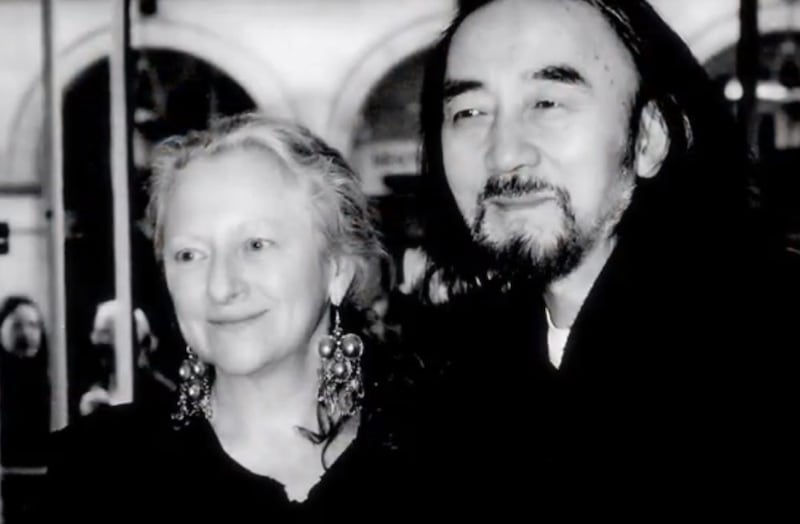
The Business of Fashion
Agenda-setting intelligence, analysis and advice for the global fashion community.

Agenda-setting intelligence, analysis and advice for the global fashion community.

The author has shared a YouTube video.
You will need to accept and consent to the use of cookies and similar technologies by our third-party partners (including: YouTube, Instagram or Twitter), in order to view embedded content in this article and others you may visit in future.
NEW YORK, United States — When Irene Silvagni arrived at French Vogue in the mid-1980s, she (along with Colombe Pringle) recognised a new wave of photographers, models and, of course, designers. She brought Peter Lindbergh, Paolo Roversi, Bruce Weber, Ellen Von Unwerth and a then unemployable Steven Meisel to the pages of Vogue, before they and their aesthetic were accepted by New York, London or Milan. And her support of new Japanese designers and a chance meeting with Yohji Yamamoto at a Comme des Garçons show led to one of the most beautiful and personal collaborations fashion has ever seen.
I was approached a few months ago by the team at Byronesque, a vintage e-commerce and editorial site, with some raw footage of Madame Silvagni recalling this collaboration and her role as creative director of Yohji Yamamoto during his most influential period. They had approached her about selling some of her original Yohji Yamamoto pieces and what was supposed to be a quick shoot became a full recounting of their collaboration.
At the time Silvagni recalls, in the mid-1980s and 1990s, I was working, first, as an assistant at American Vogue in New York and then, eventually, as a fashion editor at French Vogue in Paris and, as a result, had what you might call a front row seat to the whole thing. So after listening to the tapes, I said to the Byronesque team, "Ok, I think I can tell this story in a way that was more than just historical or nostalgic."
It's an excellent time to watch those old shows, to look at those clothes and think about them — think about how avant-garde both Yohji and Rei Kawakubo were when they began in 1981. As Madame Silvagni says in the film, "There were people fighting with fists outside after these shows." It was still a time when passion was everything, when you didn't just say "fab" and hurry off to the next show or store opening. Another thing that's incredible to notice: there were no celebrities, everyone was actually watching the show, and looking at the clothes, with great intensity, sometimes with big smiles and always applause.
ADVERTISEMENT
Look carefully and you will see the applause was not for Yohji the man, not for the cult of the celebrity designer, but rather, for the workmanship, the sensuality, the proportions, the way the fabric moved on the woman, the way each outfit was having a dialogue with the one that preceded it and the one the was to follow. There were no elaborate carrousels or millions of dollars worth of flowers or anything like that. The dresses, the hats, the suits, the girls, the way they walked, the way they floated, every outfit was like its own show. Every outfit, though they may have seemed simple, was a complicated sartorial expression. Yohji Yamamoto really understood a woman's body, the proportional beauty and the ephemeral qualities that go along with that beauty.
I was lucky enough to be seated next to André Leon Talley at almost every show during that period and it was something I looked forward to as much as the show itself. We were inspired to reminisce about the days working together in New York, when we would wait for the haute couture gowns to arrive off of the Concorde, which landed at JFK around 5pm. Waiting and waiting for the trunks to arrive in the office as we pulled out masses and masses of yellow duchesse satin sent directly from the salon of Hubert de Givenchy. Ah, and I remembered his very Vogue way of teaching us about haute couture. He said, "You see, that is what makes couture couture, because when the fabric is like this you can just shake and wear." This we remembered, all while waiting for the unbelievable yellow gown Yohji was about to send passed us.
Skip to the next season. I find my seat and, to my sadness and disappointment, André is nowhere to be found. I thought it was not possible he would miss this presentation, but the lights went down and they began the now infamous "wedding show." And lo and behold, to my great delight, André was actually in the show, playing the groom.
Look at the clothes, look at the audience, just put down your phone for a minute (or 10 minutes) and really look. It's emotional and inspiring, and a great reminder of how much has changed. The short film’s title, "Mono No Aware" refers to a Japanese literary concept that contains empathy towards the beauty of things as well as an awareness of the impermanence of these things and the gentle sadness that might evoke.
"Mono No Aware" will be presented next week in New York at Byronesque Offline, hosted by Michèle Lamy, Glenn O'Brien and Mazdak Rassi.
To watch "Mono No Aware" now, click here.
From analysis of the global fashion and beauty industries to career and personal advice, BoF’s founder and CEO, Imran Amed, will be answering your questions on Sunday, February 18, 2024 during London Fashion Week.
The State of Fashion 2024 breaks down the 10 themes that will define the industry in the year ahead.
Imran Amed reviews the most important fashion stories of the year and shares his predictions on what this means for the industry in 2024.
After three days of inspiring talks, guests closed out BoF’s gathering for big thinkers with a black tie gala followed by an intimate performance from Rita Ora — guest starring Billy Porter.